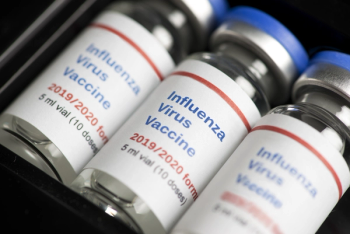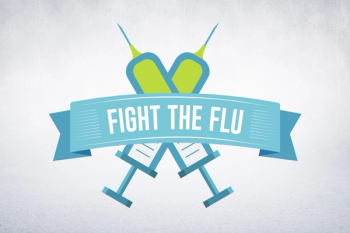
Pharmacy Times® interviewed Ramzi Yacoub, chief pharmacy officer at SingleCare, on how data from SingleCare has shown an intense surge in demand for the flu vaccine this year.


Pharmacy Times® interviewed Ramzi Yacoub, chief pharmacy officer at SingleCare, on how data from SingleCare has shown an intense surge in demand for the flu vaccine this year.

Agency strongly encourages vaccination of flu amidst COVID-19 pandemic to protect nation’s seniors.

The new study suggests that COVID-19 will follow the track of other respiratory viruses and become seasonal in countries with temperate climates, but only when herd immunity is attained through natural infection or vaccinations.

Top news of the week from Pharmacy Times®.

Although the presence of rhinovirus limited the ability of influenza to infect cells, researchers do not know whether the same effect will be seen with COVID-19.

The emergency use of drugs to shorten hospitalization and prolong time for COVID-19 vaccine research and development will serve as a critical temporary buffer for an efficient vaccine to combat SARS-CoV-2.

Pharmacy Times® interviewed Fred Peruggia, the head of marketing for respiratory and biologics vaccines at AstraZeneca, on the company’s production and distribution of an intranasal flu vaccine for this flu season.

A new study published in JAMA suggests that prevention of both coronavirus disease 2019 (COVID-19) and seasonal influenza in US children is sensible and important for the well-being of the population.

Research examines whether immunizations had any link with the risk of heart failure patients dying while in the hospital, since few studies have compared the outcomes of vaccinated and unvaccinated patients.

In a new study assessing the demographics of the groups less likely to receive the flu shot, researchers find the biggest determinants of whether an individual was vaccinated for the flu.

Although 68% of adults say they get a flu vaccine at least some years, poll results found that younger adults and Black Americans are significantly less likely.

Researchers at the University of Alabama in Tuscaloosa observed a statistically significant correlation between the occurrence of obesity and negative outcomes from COVID-19.

Negative feelings toward vaccines may be caused by the recommendations given by authorities or social pressure in society to get vaccinated, according to a study.

At the Advisory Committee on Immunization Practices' June 2020 meeting, the agenda included discussions of the meningococcal vaccine, influenza vaccine, and coronavirus disease 2019 (COVID- 19).

Pharmacy Times spoke with NACDS President and CEO Steven C. Anderson, FASAE, CAE, IOM, about the vital role pharmacists have in the upcoming influenza season and how they will be involved in distribution of the COVID-19 vaccine.

In populations with moderately high background levels of flu vaccination coverage, vaccine intervention programs were found to reduce influenza spread.

Pharmacists must raise awareness to dispel misinformation surrounding vaccines during a critical flu season.

Knowing the order in which the symptoms of coronavirus disease 2019 manifest can help physicians make a more accurate diagnosis.

Walgreens is now offering flu shots daily at all of its nearly 9100 pharmacies, with additional safety measures in place that follow the CDC’s recommendations for anyone over 6 months of age to get the flu shot.

The 2020 virtual Directions in Pharmacy® conference provided a comprehensive overview of influenza, including identifying at-risk patients and providing interventions to address vaccination misconceptions.

Flu vaccination will be particularly important in the 2020-2021 season to lessen the burden on the health care system and ensure adequate resources amid the coronavirus disease 2019 pandemic.

Inflluenza treatment was a timely topic discussed during the 2020 virtual Directions in Pharmacy® conference.

The peptide, also known as Pept-ins, already proved to be a valuable approach to tackle bacterial pathogens or slow down tumor growth, according to the study authors.

Is there any scientific evidence that sliced onions help rid a home of influenza and other viruses?

A study showed that pharmacists in the state of Wisconsin are most likely to administer zoster and influenza vaccines to customers.